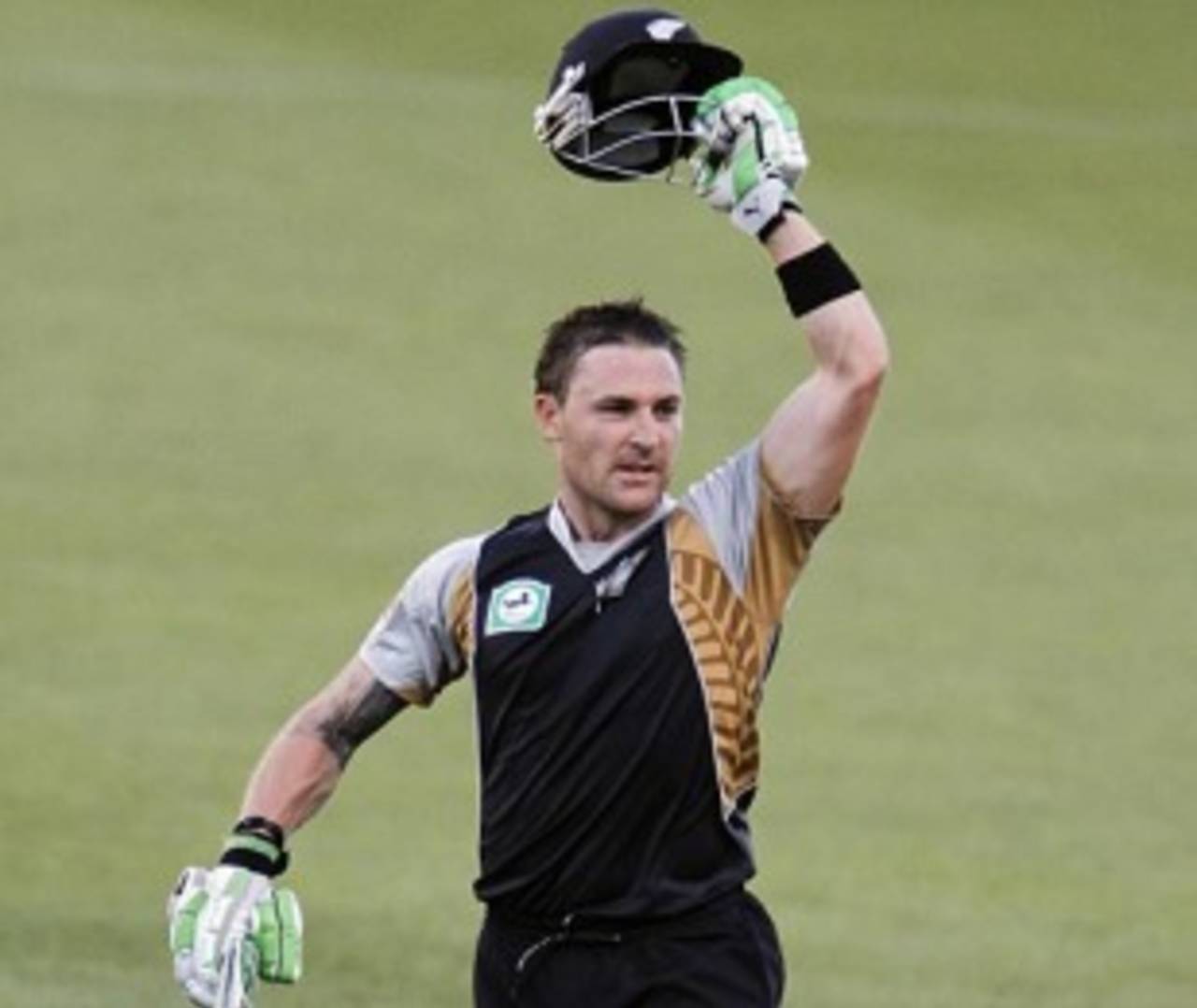New Zealand's thrilling
two-wicket win against Australia in the first match of the Chappell-Hadlee Trophy was the perfect start to the five-match series. Australia may be the best ODI team in the world, but they'll know that victories in the Chappell-Hadlee games haven't come easy in the past: in
five previous series they've only won two - in 2005 and in 2007. The 2-0 win
in 2007 was the only instance when New Zealand didn't win a single match in the series. Twice, in the inaugural edition in 2004 and then again last year, the series was drawn. Last year, especially, New Zealand would have felt they were on course to winning the
truncated decider, requiring 33 in six overs when play was called off.
Some of New Zealand's most memorable ODI wins against Australia have come in this tournament. It didn't get any better than
in 2007, when New Zealand registered their
only ten-wicket win against Australia, and then twice chased 330-plus targets for a famous 3-0 triumph. Their spirited performance on Wednesday was in keeping with their proud record when playing for this trophy - in
17 games they've won eight and lost only seven.
It's an outstanding record, which is why their stats against Australia in non-Chappell-Hadlee matches during this period are so perplexing: they've played
13 times in competitions ranging from bilateral series to World Cups to Champions Trophies, and the result has been the same every single time - an Australian victory. It's almost as if the names of the legends inspire New Zealand to a whole new level, while at the same time causing a dip in Australia's performances.
Just how much New Zealand lift their game is evident from the table below. In matches for the Chappell-Hadlee Trophy they average almost 32 runs per wicket, and score at more than five-and-a-half runs per over. Australia have a higher average in these matches, but their run rate is marginally lower.
In other matches between the two teams, though, the gulf is vast. New Zealand's average drops to a dismal 24.22, while Australia score almost twice as many per wicket. Australia's run rate is much better too: they score almost one run more per over, which explains the 13-0 washout in these matches.
Clearly, the drop in numbers for the New Zealand batsmen is more than for the bowlers. The batting average reduces by almost 24%, while the run rate drops by 13%. The average for the Australian batsmen (which is the average for New Zealand in the field) increases by 19% in non-Chappell-Hadlee matches, while the run rate goes up by only 5%.
So let's break up the numbers by each batsman, and see whose stats are the most uneven. As you'd expect, most of the top names have much better stats in the Chappell-Hadlee matches. Brendon McCullum
averages almost 43 at a strike rate of 94 in these matches, but his overall
ODI average against Australia during this period (since January 2004) drops by more than 10 runs, to 31.62. That's because in other ODIs against Australia, he averages a miserable 20.33, at a strike rate of less than 70. The drop is even more pronounced for Chris Cairns, who was a match-winner in Chappell-Hadlee matches - average 41.75, strike rate 114.38 - but a damp squib in other games - average 14 in six games. For Ross Taylor, one of the heroes of Wednesday's match, the fall isn't quite as much, but still very significant - the average reduces
from 46.10 to less than 30. It's a similar story for Scott Styris - the other key performer from Wednesday - Craig McMillan and, to a much lesser extent, Peter Fulton.
The two major exceptions to this rule have been Jacob Oram and Lou Vincent. Oram averages 58 in non-Chappell-Hadlee games, and his only 50-plus score against Australia came in one such match, an outstanding unbeaten 101 off 72 balls that almost chased down a
target of 344 in Perth in the 2006-07 CB Series.
The overall numbers for New Zealand's bowlers aren't as contrasting, but two of their main names have much better stats in Chappell-Hadlee matches than in others. Shane Bond has taken
eight wickets in three Chappell-Hadlee games at an average of 14, but in other games his average goes up to more than 30, while the economy rate rises from 3.92 to 5.49. Similarly, Daniel Vettori has struggled against Australia in non-Chappell-Hadlee games, taking seven wickets in 11 matches at an average of more than 66, though the economy rate remains more or less unchanged.
Among the Australian bowlers, the stats for Glenn McGrath stand out the most. In three Chappell-Hadlee games, he managed only a solitary wicket at an average of 103; in nine other ODIs against New Zealand he took 21 wickets at 15.86. Shaun Tait has done superbly too in his two non-Chappell-Hadlee games against New Zealand, while the same applies for Brad Hogg too.
Australia's top batsmen, though, have very similar stats in
all games against New Zealand (since January 2004) and in matches for the
Chappell-Hadlee Trophy.
